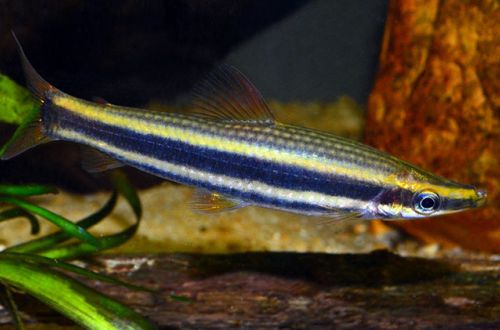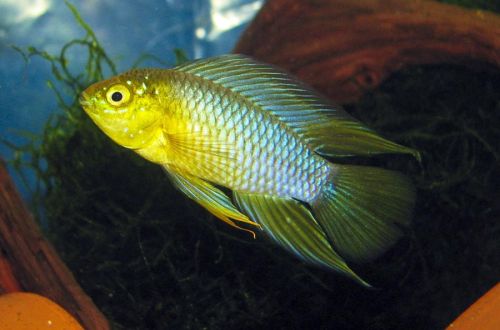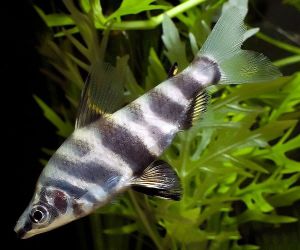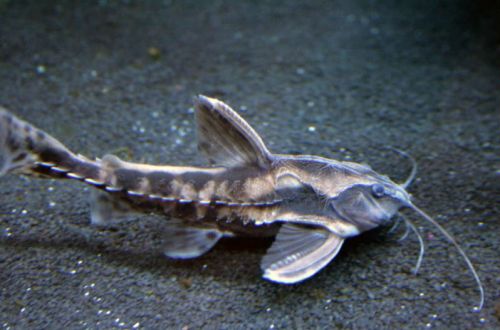
Anostomus Ternetsa
Anostomus Ternetza, scientific name Anostomus ternetzi, belongs to the family Anostomidae. The fish is named after the ichthyologist Karl Ternets, who first discovered and described this species. One of the two most popular and well-known representatives of the family along with Anostomus vulgaris.

Contents
Habitat
It comes from South America from the river systems of the upper Orinoco basin, flowing through Brazil, Colombia and Venezuela. In the wild, this fish is found along the rocky banks of fast-flowing rivers, mostly in shallow water.
Brief information:
- The volume of the aquarium – from 100 l
- Temperature – 20-28°C
- Value pH — 5.5–7.5
- Water hardness – soft to medium hard (1-15 dGH)
- Substrate type – fine gravel and piles of stones
- Lighting – bright
- Brackish water – no
- Water movement is strong
- Size is about 12 cm.
- Nutrition – any, with a large number of herbal supplements
- Life expectancy – from 5 to 8 years
Description
The fish has an elongated body, somewhat reminiscent of an ordinary pike. Coloring combined and consists of black and white stripes. Young individuals are much lighter in comparison with adults. The fins are transparent light brown.
Food
Anostomus Ternetsa belongs to the omnivorous species. In nature, it feeds on algae growing on rocks and small invertebrates. The daily diet should include a variety of foods in the form of flakes, granules, as well as live or frozen food from artemia, daphnia, bloodworms. The composition must contain herbal supplements.
Maintenance and care, arrangement of the aquarium
The optimal size of the aquarium for one fish starts from 100 liters. The design uses a rocky substrate, heaps of smooth stones and rocks, driftwood of various shapes. The presence of aquatic plants is not necessary, if desired, you can place a few hardy species with a well-developed root system that can withstand a strong current.
To simulate the conditions of the natural habitat, an artificial flow system should be provided. In some cases, the source of water movement will be a productive filtration system combined with aeration. It will also become the key to the successful maintenance of Anostomus Ternets, which needs clean running water rich in dissolved oxygen. Bright lighting is welcome, it will encourage the growth of algae – an additional source of food.
Behavior and Compatibility
They can live both singly and in flocks of 6-7 individuals. In pairs or small groups, fish are not very friendly to relatives, so the more fish, the better. Compatible with other non-aggressive species capable of living in similar fast current conditions.
Fish diseases
In most cases, the occurrence and development of a particular disease is directly related to the conditions of detention. The appearance of the first symptoms usually indicates that negative changes have occurred in the external environment. For example, there has been an increase in the concentrations of products of the nitrogen cycle (ammonia, nitrites, nitrates), drastic changes in pH or dGH values, poor quality food has been used, etc. In these cases, it is necessary to return the biological system of the aquarium to balance. If symptoms persist, start medical treatment. Read more about symptoms and treatments in the Aquarium Fish Diseases section.





